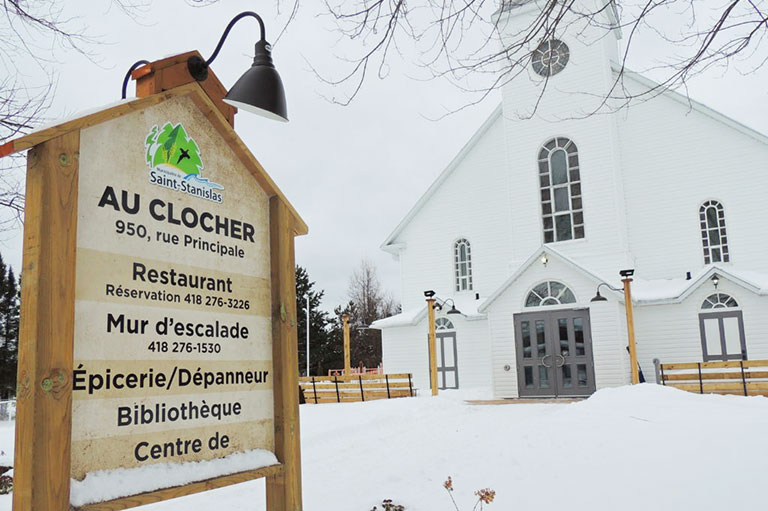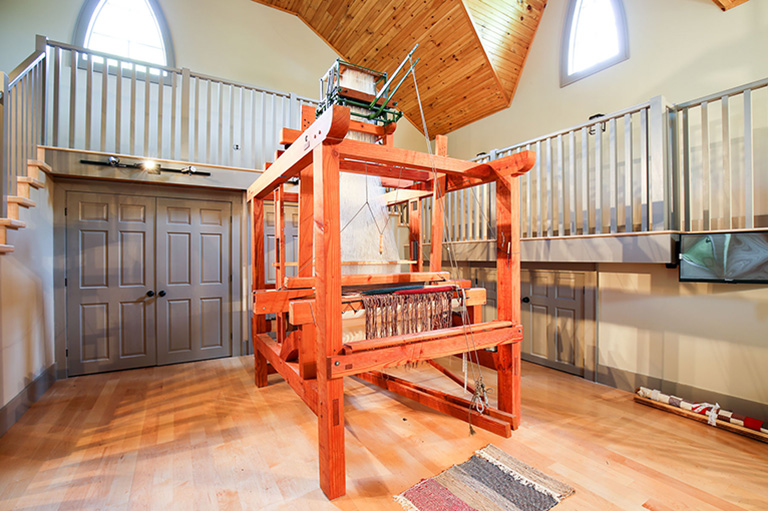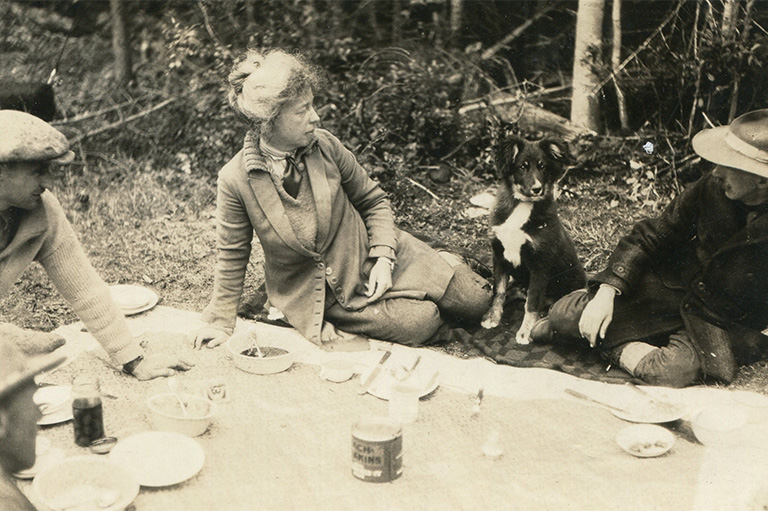Bayer’s Lake Mystery Walls
Just outside of Halifax, Nova Scotia, lies a network of archaeological sites that might hold essential clues to understanding the province’s early colonial history. Its most prominent feature is a stone wall about 150 metres long that snakes around the upper parts of an escarpment. Reaching up to two metres high, the construction consists of ironstone slabs carefully stacked on top of one another without the use of mortar. A short walk away, on top of the escarpment, lays a peculiar five-sided enclosure with similar walls a metre high and over a metre thick. A stone staircase, historic roads, and three ironstone quarries can also be found in the immediate area. In 1998 a lichenologist examined the patterns of lichen growth on the main wall and determined that the slabs hadn’t been disturbed for at least 200 years. In other words, these walls were built within decades of Halifax’s founding. Almost nothing else is known about the site. The walls have received a considerable amount of public attention due to their mysterious nature, but this emphasis has tended to obscure two corresponding details. The site’s archaeological potential is substantial; its archaeological integrity, troublingly vulnerable.
Article continues below.
-
 The walls of this asymmetrical, five-sided enclosure stand a metre high and are over a metre thick.Denise Gow-Morse
The walls of this asymmetrical, five-sided enclosure stand a metre high and are over a metre thick.Denise Gow-Morse -
 The stonework of this subchamber does not interlock with that of the five-sided enclosure, suggesting it was built at a later date.Denise Gow-Morse
The stonework of this subchamber does not interlock with that of the five-sided enclosure, suggesting it was built at a later date.Denise Gow-Morse -
 The surrounding forest gradually reclaims the site. A sign in the distance wards off would-be treasure hunters.Denise Gow-Morse
The surrounding forest gradually reclaims the site. A sign in the distance wards off would-be treasure hunters.Denise Gow-Morse -
 The “mystery wall” runs along the edge of an escarpment, stretching some 150 metres in length.Denise Gow-Morse
The “mystery wall” runs along the edge of an escarpment, stretching some 150 metres in length.Denise Gow-Morse -
 A view from the escarpment reveals the archaeological site’s proximity to modern roads and buildings.Denise Gow-Morse
A view from the escarpment reveals the archaeological site’s proximity to modern roads and buildings.Denise Gow-Morse -
 Ironstone stairs ascend a rock face to what is believed to have been the footings of a wooden building.Denise Gow-Morse
Ironstone stairs ascend a rock face to what is believed to have been the footings of a wooden building.Denise Gow-Morse -
 Signs posted to nearby trees prohibit “treasure-hunting.” Any interference with the site could irreparably hinder future archaeological investigation.Denise Gow-Morse
Signs posted to nearby trees prohibit “treasure-hunting.” Any interference with the site could irreparably hinder future archaeological investigation.Denise Gow-Morse
Named for a nearby business park, the network is referred to in provincial archaeological assessments as the Bayer’s Lake Historic Site. Local residents have adopted a more colloquial name: the Bayer’s Lake Mystery Walls. The latter name points to the fact that archaeologists and historians have been unable to provide a conclusive explanation of the site’s origins since its public rediscovery in 1990. Documentary evidence pertaining to the site is almost entirely absent. Nearby commercial and road development limits the possibilities of broader archeological investigation, and archaeologists have yet to conduct a full assessment on the site itself. Until they do, any hypotheses will be limited to guesswork.
Inevitably, the absence of definitive answers has invited speculation. Some commentators postulate that the site was used as a training ground for the siege of the Fortress of Louisbourg in 1758. A more indulgent theory suggests that a Scottish earl built the walls during his fourteenth century voyage to North America (in search of the Holy Grail, to boot). The most comprehensive study to date was prepared by archaeologists W. Bruce Stewart and Mike Sanders of Cultural Resource Management (CRM) Group in 2008. Their report posits that the historic roads may have once formed part of the original road between Halifax and Lunenburg (built circa 1757). If so, the thick ironstone walls may be defensive structures that were intended to prevent the French from using the road to transport cannons for a rear attack on Halifax. Unfortunately, researchers have been unable to locate documents indicating the precise course of the road as it leads off the Halifax peninsula towards the walls.
While the search for answers continues, heritage professionals must consider how best to protect and preserve the site for future generations. The site’s proximity to the city and nearby development makes it vulnerable to over-visiting, according to Nova Scotia Special Places Coordinator Sean Weseloh McKeane. As a registered archaeological site, the Bayer’s Lake walls are protected under the province’s Special Places Protection Act. Anyone caught disturbing the site could face a fine beginning at $10,000. Unfortunately, the forested location of the walls makes intrusions difficult to monitor. Signs zip-tied to nearby trees loudly proclaim that digging, collecting, and metal detecting are prohibited, but McKeane notes that “there are periodic signs of digging that [are] likely associated with illicit attempts at artifact searches.” Members of the Nova Scotia Archaeological Society have seen online videos, blogs and discussions of items removed from the area, including old coins, a knife, and a gold medallion on a necklace. Even seemingly benign activities like climbing over walls or reassembling slabs into inukshuks can obscure the archaeological record, sometimes irreparably.
Heritage professionals and other stakeholders must walk a fine balance between raising public appreciation of the site and revealing its whereabouts to would-be looters and vandals. “Any efforts to increase public knowledge and access to the site need to be balanced with stewardship and enforcement mechanisms,” says McKeane, “Often the best way to protect a site is to minimize the number of people who are aware of a site and its location.” It can take years of archaeological investigations to gather the information required to develop an appropriate site management plan. In the meantime, the mystery will continue to entice visitors. One hopes that these will treat the site with the respect it merits. The mystery is alluring, but the site is vulnerable. With each stone disturbed and each item removed, the origin of the “Mystery Walls” sinks further into the past.
Themes associated with this article
Advertisement
Help support history teachers across Canada!
By donating your unused Aeroplan points to Canada’s History Society, you help us provide teachers with crucial resources by offsetting the cost of running our education and awards programs.




